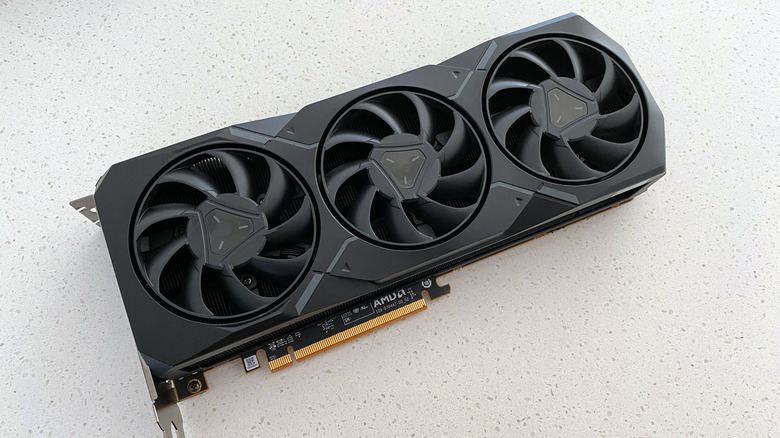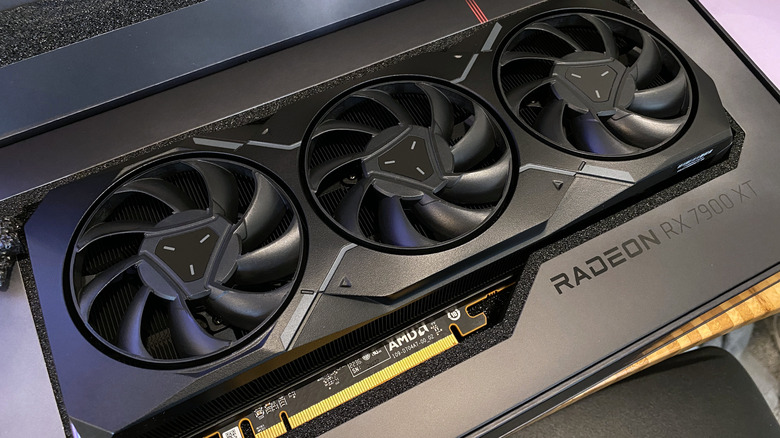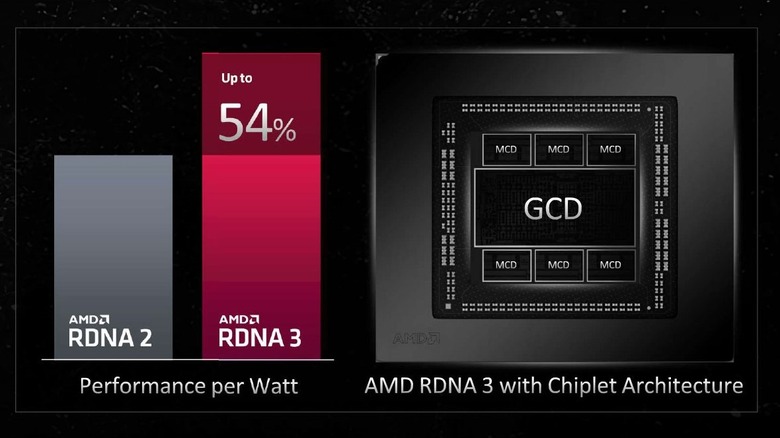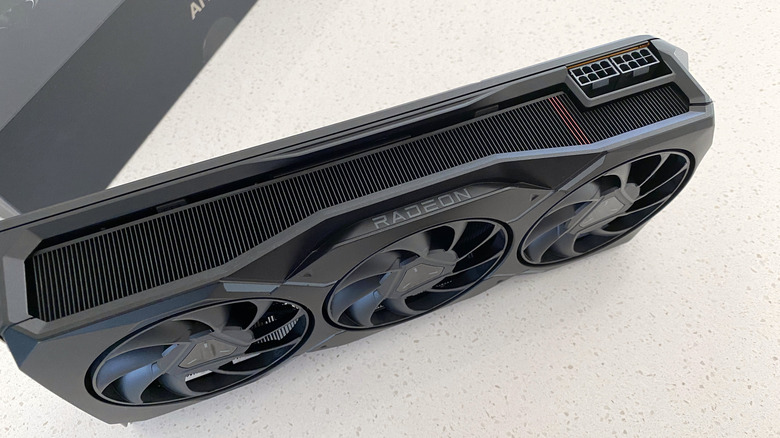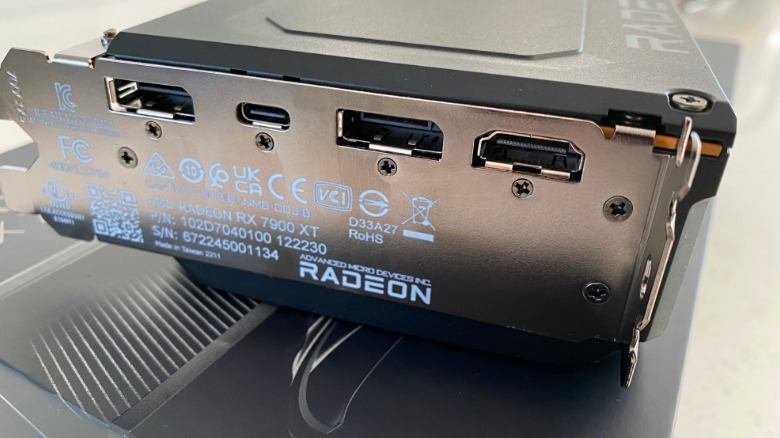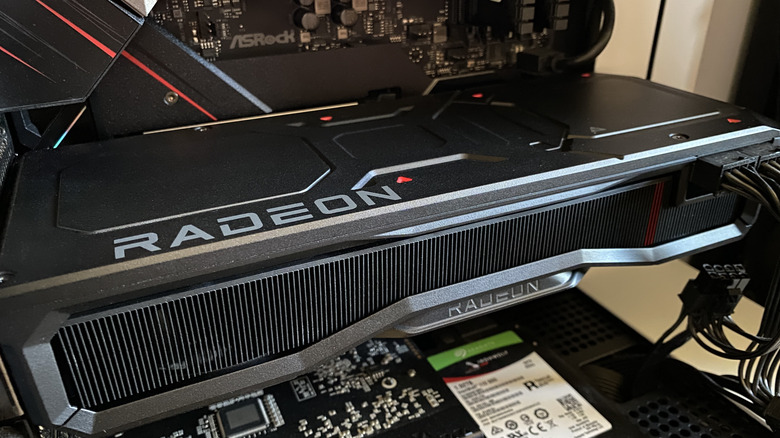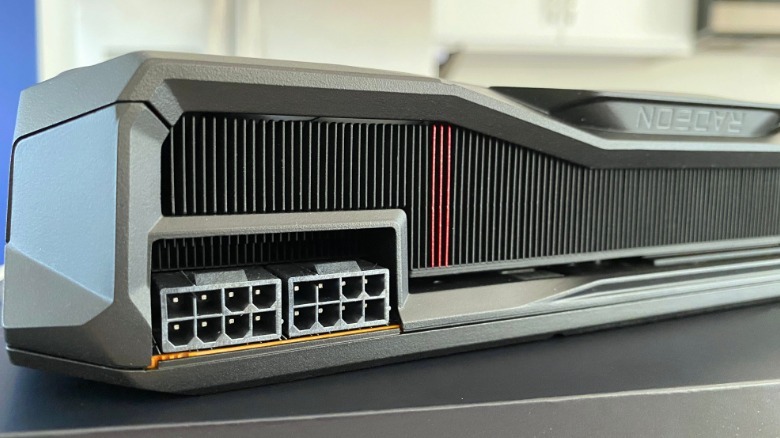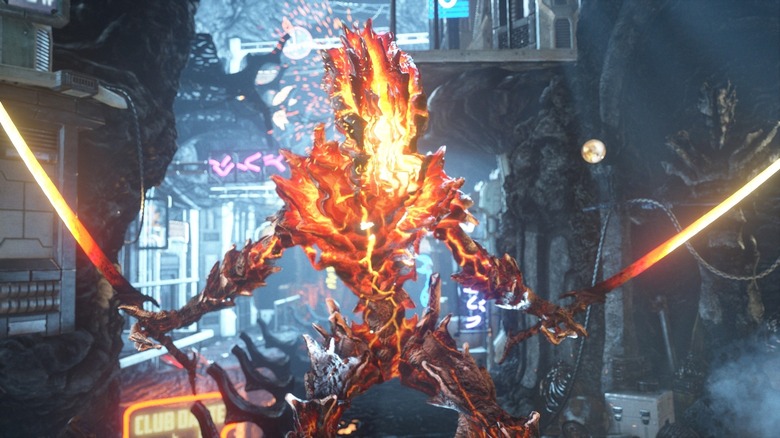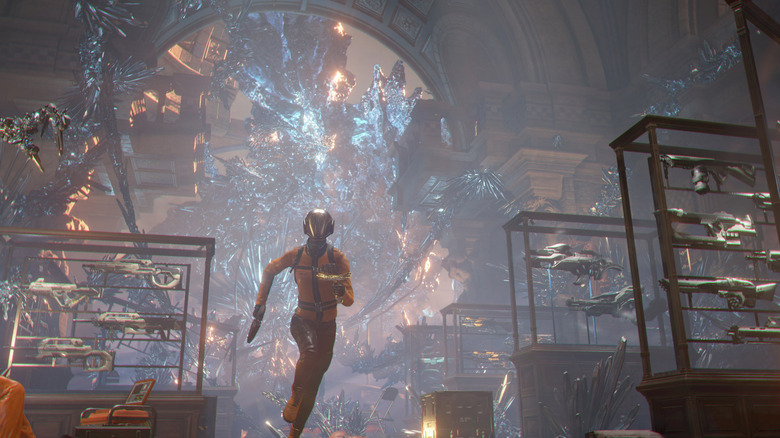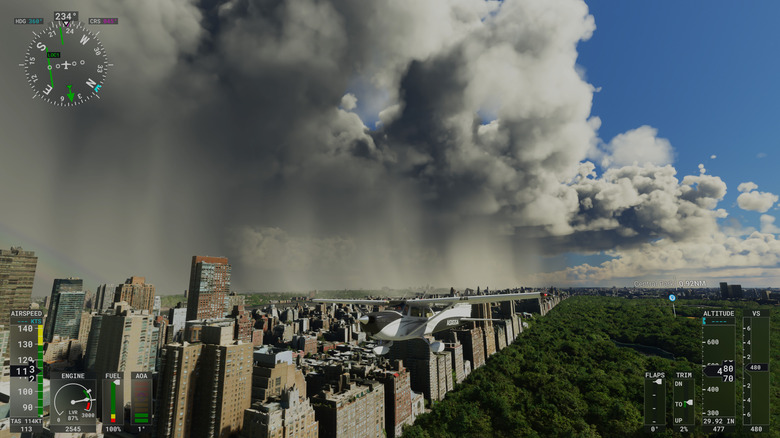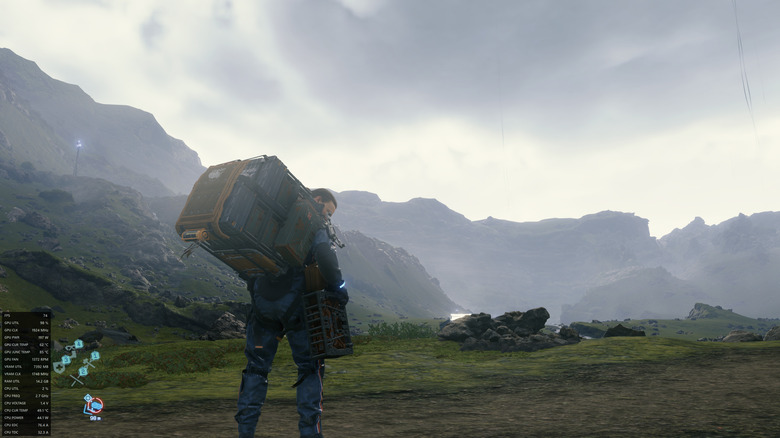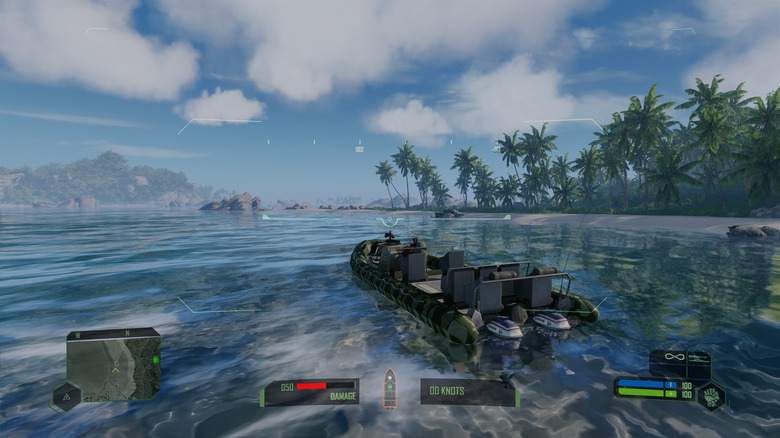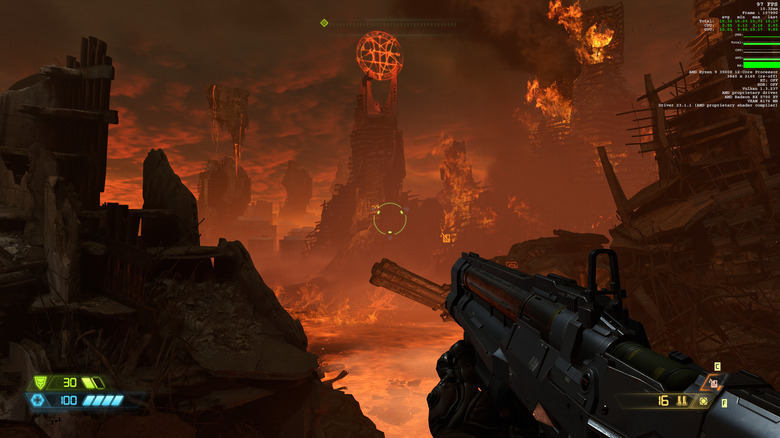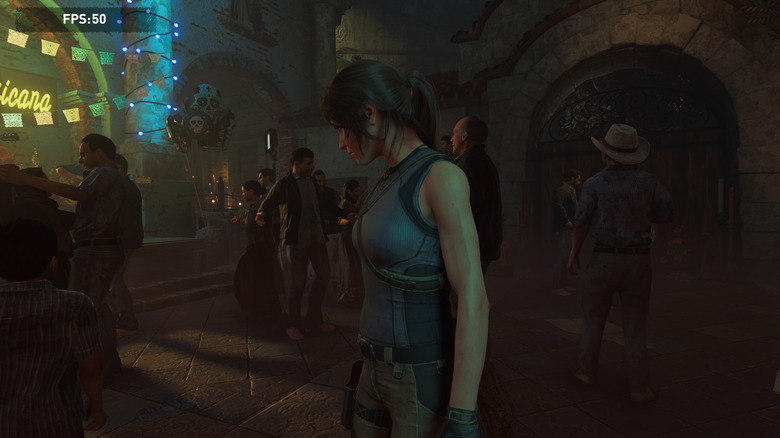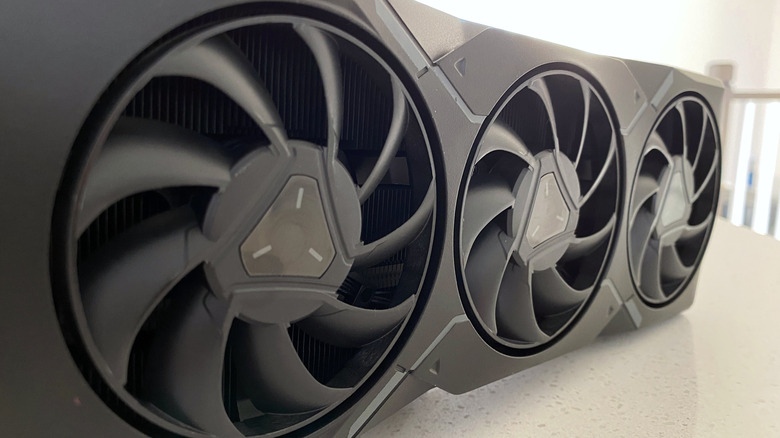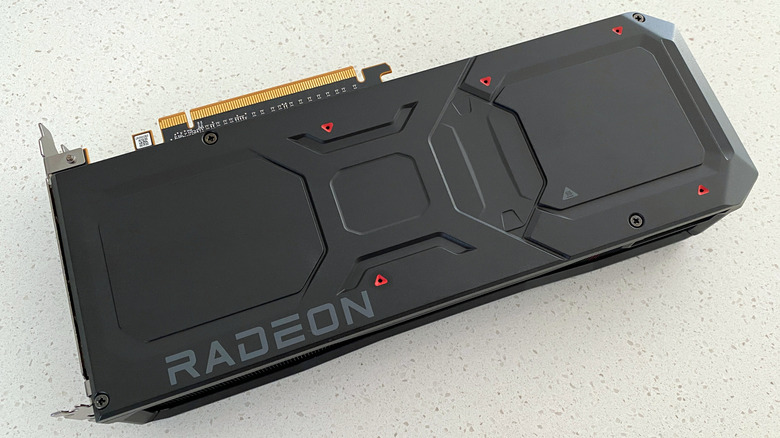AMD Radeon RX 7900 XT Review: The Price Of 4K Gaming
- Consistent 4K performance
- Quiet fans
- Beats comparable previous-gen cards
- Uses standard 8-pin power
- Looks gorgeous
- Some coil whine
- Only $100 cheaper than flagship 7900 XTX
We may receive a commission on purchases made from links.
AMD has released its RDNA3 graphics cards onto the market, and in this review, we're looking at the smaller of the two available cards: the Radeon RX 7900 XT. AMD aims to undercut Nvidia's flagship cards with this release, with this specific graphics card aimed at 4K gaming with graphics maxed out. The RX 7900 XT is priced at $899, substantially cheaper than the competition in the $1,199 Nvidia RTX 4080 and $1,599 Nvidia RTX 4090.
The RX 7900 XT uses the Navi 31 silicon design, which uses a chiplet design for the first time on a consumer graphics card. Stream processors and the shader engines are in a Graphics Compute Die (GCD) surrounded by six Memory Cache Dies (MCDs) with Infinity Cache memory, memory controllers, and GDDR6X modules inside. Only five of the MCDs are active in the RX 7900 XT, possibly made from chiplets that didn't pass the cut for the XTX variant. We've seen this chiplet design used to good effect in AMD's Ryzen CPU range. Let's see how the changes affect the performance inside of AMD's latest graphics cards. AMD sent us this graphics card for the purpose of this review.
AMD Radeon RX 7900 XT Specs
The AMD Radeon RX 7900 XT graphics card is based on AMD's RDNA 3 architecture and has 84 compute units, 84 ray accelerators, and a peak single precision compute performance of 52 TFLOPs. To put that into context, the Xbox Series X has a GPU based on RDNA 2 with 12 TFLOPs, so the RX 7900 XT is over four times the performance on paper.
The RX 7900 XT has a base frequency of 2,000 MHz and a boost frequency of up to 2,400 MHz. It uses TSMC's 5nm and 6nm manufacturing process nodes with a transistor count of 57.7 billion. The core is served by 20GB of GDDR6X VRAM with a 320-bit memory interface at 800 Gbps of bandwidth. AMD specifies the board power at 315 watts, and suggests a 750W power supply as a minimum requirement. The card supports HDMI 4K, H265/HEVC decode and encode, 4K H264 decode and encode, and the newest video codec, AV1, in both decode and encode.
A new architecture
The RX 7900 XT uses AMD's third-generation RDNA graphics architecture. The biggest change here is that AMD is using a chiplet arrangement, with the graphics core in one chiplet on TSMC's 5nm node and memory chiplets that are built on the 6nm node. The Graphics Compute Die (GCD) is on the newer 5nm node, with the memory controllers and L3 cache spun off into chiplets called Memory Cache Dies (MCDs) on the 6nm node.
That gives the shader engines, L1 and L2 cache, the Display Engine, Media Engine, the front-end Command Processor and the Async Compute Engines (ACEs) a home in the more advanced 5nm node, where they can benefit from the power efficiencies from the node jump. The five active MCDs on the RX 7900 XT each have a 64-bit memory bus, 16MB of the 80MB of Infinity Cache memory, and 4GB of GDDR6X memory. To reduce the latency caused by using the Infinity Link arrangement, AMD overclocks the Infinity Fabric clock by 43% and the GFx game clock by 18%. This gives a 10% reduction in latency compared to the Navi21 RDNA2 cores from the RX 6000 series.
Hardware Design
The AMD Radeon RX 7900 XT reference model we're reviewing here is the smaller of the two graphics cards released by the company this generation, at 276mm long. The card is a 2.5-slot design, so expect to lose access to multiple PCIe slots when installed on a motherboard unless the air cooler is swapped for a water-cooling block. It uses three fans to cool the hefty heatsink, which is enclosed with a futuristic plastic shroud. A full-coverage backplate protects the back of the PCB from damage while likely serving as a heatsink for the components on that side. The card weighed 1530g on our scale.
The card is well put together, and the fully-enclosed design covers the PCB edges and other areas that often look unsightly on consumer electronics. That doesn't affect the working of the card one iota, but it does fit with the premium price tag AMD is selling this card for.
AMD used tried-and-tested eight-pin PCI Express power connectors to power the RX 7900 XT, with two providing the necessary wattage for the card. No need for cable adapters here or upgrading your power supply as long as you have one of 750W capacity or more. The card has two DisplayPort 2.1 ports that can support an 8K display at 165Hz or two 8K at 60Hz each. One HDMI 2.1 port and a USB Type-C port with DP 1.2 passthrough round out the connectivity options. It connects to the motherboard using a PCI-Express 4.0 x16 interface.
Card Installation
The Radeon RX 7900 XT installation was straightforward enough, with a straight swap from the Nvidia RTX 3070 that normally lives in our gaming PC. As the new card uses eight-pin PCIe power, we didn't have to swap cables or introduce an adapter into the mix. The 296mm length is smaller than the 310mm length of the last-gen card we replaced, with both fitting with plenty of space into the NZXT H710. With the relatively small size of the RX 7900 XT, all but the smallest form-factor cases should be able to fit it easily.
Testing was performed on an open-frame test bench for ease of swapping graphics cards. The test system was an AMD Ryzen 3900X installed on an ASUS TUF X570-PLUS (Wi-Fi) motherboard. Windows 11 was installed on a PCI-e 4.0 NVMe drive, with all of the games and programs tested on a second PCI-e 4.0 NVMe drive to limit potential bottlenecks due to system bandwidth.
The driver used for the RX 7900 XT was Adrenalin 23.1.1 for Radeon RX 7900 Series (WHQL), which was released on January 11th, 2023. The Nvidia RTX 3070 in our testing used driver 528.49. The RX 5700 XT used for testing used Adrenalin 22.11.2 Recommended (WHQL) from December 8th of 2022. AMD had the RDNA 3 graphics cards using a separate driver branch to its existing cards at the time, this has since changed with a unified driver released on February 14th, 2023, but it had reported issues at the time of testing. Hence, we opted not to rerun tests.
Synthetic benchmarks part 1
During our week of testing, we started by running synthetic benchmarks from 3DMark and VRMark. Each test was run three times, and averages were created to rule out any variance between tests. The RX 9700 XT shows a significant uplift in performance versus the other two graphics cards, particularly as the rendering resolution increases. The only outlier was VR performance, where the midrange RTX 3070 from the last generation slightly edged the newer card out.
In Fire Strike (1080p), the AMD RX 5700 XT scored 23,775, while the Nvidia RTX 3070 had a score of 27,067, and the AMD RX 7900 XT rang in at 36,145. That's a 52% uplift for AMD over two generations, but remember this card is targeted at 4K gamers so we hope to see higher gains as the resolution increases. For Fire Strike Extreme (1440p), the AMD RX 5700 XT posted a respectable 12,620, with the Nvidia RTX 3070 edging ahead with a score of 15,681. The AMD RX 7900 XT blows those scores out of the water, with a result of 27,227. That's a 116% increase over two successive generations, and the Navi31 card is only warming up.
For the 4K-targeted Fire Strike Ultra, the AMD RX 5700 XT posts a score of 6,822, with the Nvidia RTX 3070 coming in at 8,525. The AMD RX 7900 XT nearly doubles that, with 16,587. That's a 143% increase in performance for AMD versus the 7nm Navi10 card which launched in 2019.
Synthetic benchmarks part 2
Moving on to the higher requirements of Time Spy, which targets 1440p gaming, the AMD RX 5700 XT starts off with a score of 9,990. The Nvidia RTX 3070 stretches its legs to get a score of 13,373 but the AMD RX 7900 XT blows past both with a score of 21,811. A 118% increase in performance is what we expected after the Fire Strike Extreme results, but it's good to see the tests back that up. The 4K target of Time Spy Extreme is up next, with the RX 5700 XT showing its age with a score of 4,870. Nvidia's RTX 3070 fares better with a score of 6,678 but again the AMD RX 7900 XT powers past to a score of 11,081 — a 128% increase for AMD's cards.
We've added VRMark's Orange Room into our testing, as more and more gamers purchase a VR headset to game on their PC. This benchmark is intensive and is geared toward the hardware requirements of the HTC Vive and Oculus Rift. While those are aging headsets now, the test shows a representative level of performance for current and next-gen VR. The AMD RX 5700 XT scores 10,810, showing that it meets the VR requirements of two of the most popular headsets. The Nvidia RTX 3070 scores 11,930, and the AMD RX 7900 XT scores 11,707, with all three cards showing their VR proficiency. It should be noted that synthetic benchmarks like these aren't necessarily indicative of real-world performance. Where they do have utility is in showing trends of overall performance between differing architectures, generations, and device manufacturers.
Gaming benchmarks - Microsoft Flight Simulator
All our gaming tests were done with three runs, averaging the scores to get to the final results. We tested at high settings, using the games from our Nvidia RTX 3080 review and "Crysis Remastered," the recent remaster and rerelease of one of the ultimate tests of any computer. In all of our gaming tests at 4K resolution, the RX 7900 XT stayed under 55C core temperature with a hot spot temperature of 65C. We did experience some coil whine, mainly in-game menus when the graphics card is able to pump out high fps. This noise went away once starting to play.
Microsoft's latest "Flight Simulator" is one of the most demanding tests for any graphics card. The RX 7900 XT managed a stable 60 fps at 4K, the only card we've tested that can do that without dropping from the high preset. While playing at 1440p, the AMD RX 5700 XT scored 51 fps, the Nvidia RTX 3070 a more fluid 63 fps, and the RX 7900 XT scored 60 fps. Remember this card is targeted at higher resolutions when the other two cards in our test were designed for lower ones. At 4K, the AMD RX 7900 XT was the only card to manage 60 fps, with the AMD RX 5700 XT managing fewer than 30 fps (28 in actuality), and the Nvidia RTX 3070 struggling to stay at 38 fps consistently.
Gaming benchmarks - Death Stranding
The brain of Hideo Kojima is a wonderful and weird place and decided that a walking simulator starring Norman Reedus was the perfect game to bring out as his first release after leaving Konami in 2015. That title, "Death Stranding," is set in a fractured futuristic U.S. after some cataclysm has humanity hiding away in small enclaves, served only by brave couriers who are reconnecting the cities and building their own social cache at the same time.
The game supports both Nvidia's DLSS 2.0 upscaling technology and AMD's FidelityFX CAS upscaling and sharpening tech. With our testing of a mix of graphics cards across generations, we decided to leave these two technologies off, as the results were more representative using normal render techniques. Running "Death Stranding" without DLSS at 1440p and 4K shows the RX 7900 XT pulling away from the pack at higher resolutions, thanks to the 20 GB of VRAM. The AMD RX 5700 XT managed 119 fps at 1440p, and 67 fps at 4K, showing off how well-optimized this PlayStation 4-era console port is. The Nvidia RTX 3070 pushed that up to 129 fps at 1440p, and 83 fps at 4K. The AMD RX 7900 XT scored 143 fps at 1440p and a smooth 147 fps at 4K.
Gaming benchmarks - Crysis Remastered
The original version of "Crysis" was released in 2007 and quickly spawned the "Yeah, but can it play Crysis?" meme question as it was taxing on even high-end computers. It was a literal game-changer, becoming the definitive benchmark for PC gaming performance for years to come. The remaster is no less taxing, and putting higher resolutions into play, was almost too much for the humble RX 5700 XT. The RX 7900 XT fared far better, nearly tripling the frame rates of the older card.
When playing at high graphics settings and at 1440p, the AMD RX 5700 XT managed 42 fps, perhaps showing that Crytek's CryEngine is still a force to be reckoned with. Nvidia's midrange monster, the RTX 3070, doubled that frame rate, with 85 fps averaged out over the runs. The AMD RX 7900 XT ran way into the lead with 140 fps, chewing up the graphical grunt of "Crysis Remastered" like it was kindling. At 4K resolution, the AMD RX 5700 XT made its best console impression, with a solid 30 fps. The Nvidia RTX 3070 fell short of the 60 fps gold standard for 4K gaming, managing 53 fps. The AMD RT 7900 XT put out 81 frames per second at 4K, with smooth framerates and an altogether silky experience.
Gaming benchmarks - DOOM Eternal
"DOOM Eternal" is a highly optimized title capable of blisteringly high framerates on almost every system. iD Software has been churning out ultra-violent, ultra-smooth FPS games since the early days of the modern PC, and knows a thing or two about getting every last ounce of performance from your hardware. It uses the Vulkan API for low-level control over graphics cards, ensuring every splash of gore, every shotgun blast, every glory kill, and every chewed-up chainsawed demon is reproduced on screen smoothly and speedily.
The game was no match for the RX 7900 XT, even at 4K resolution, pulling an average of 196 fps. Even the AMD RX 5700 XT managed 93 fps at 4K, respectable from a card that's nearly four years old. Nvidia's RTX 3070 made it into three figures, with 135 fps. The same ranking occurred at the lower resolution of 1440p, with nearly double-barrelled frame rates all around. The AMD RX 5700 XT blasted onto the screen with 182 fps, Nvidia's RTX 3070 managed 244 fps, and AMD's RX 7900 XT ripped and tore a new fps record in our testing of 400 fps.
Gaming benchmarks - Shadow of the Tomb Raider
Lara Croft's final outing of her origin story, "Shadow of the Tomb Raider," is a beautifully crafted romp through the jungles, ruins, and tombs of former civilizations. Peru is rendered in high detail, with foliage and high texture quality putting graphics card hardware through the wringer. When it first came out, the game stretched many cards at 1080p, with realistic shadows and dense environments. The inbuilt benchmark for "Shadow of the Tomb Raider" is great for simulating various in-game situations, showing how well modern graphics cards can handle higher resolutions. Remember, this game came out less than a year before the oldest card we're testing, the AMD RX 5700 XT so it will showcase how two successive GPU generations changed in raw power.
The RX 7900 XT again pulled way out in front at higher resolutions, putting that 20GB of VRAM to work. At 1440p and High preset, the AMD RX 5700 XT set a high bar of 96 fps. Nvidia's RTX 3070 was next, increasing that frame count to 131. The AMD RX 7900 XT jumped again higher, with 156 fps on the scoreboard. That wasn't a huge increase, although it was compared to the older Navi10 card. At 4K, the difference showed up even further. The AMD RX 5700 XT couldn't make the 60 fps bar for 4K gaming, managing only 50 fps. The Nvidia RTX 3070 fared better, with 77 fps, which would be enough for smooth gameplay. The AMD RX 7900 XT put triple-digits into play, with 130 fps. With most 4K gaming monitors topping out at 144 Hz, that's a respectable 4K frames per second score and something that was nearly unheard of a few years ago.
Price and Release
The AMD RX 7900 XT launched on December 13, 2022, for $899. The reference card, as reviewed, can be found on AMD.com and selected retailers. AMD's Add-In Board (AIB) partners have been releasing their versions, some of which are slightly cheaper than the reference card, like the ASRock Phantom Gaming at $879.99, and some are substantially more expensive, like the Asus TUF Gaming OC Edition at $1,099.99. The price could have been higher, as the move to a chiplet design increases yields while reducing manufacturing costs.
The pricing might be the biggest issue for the RX 7900 XT. AMD has released two graphics cards this generation, this one and the RX 7900 XTX, which has an MSRP of $999. For $100 more, consumers get 4GB more VRAM, 12 more compute units and ray accelerators, and 768 more stream processors. The more expensive card boosts higher, has more TFLOPs of performance, and is a better value considering how many specifications are gained for not very much additional money. The big saving grace of the RX 7900 XT is that it is in stock, with the bigger brother often out of stock at retailers.
Conclusions
The AMD Radeon RX 7900 XT is a 4K monster, but it's slightly overshadowed by its larger brother, the RX 7900 XTX. That said, the smaller of the two current-gen AMD GPUs is no slouch, outperforming all the graphics cards we have on hand and consistently giving smooth performance when playing games at 1440p and above. To think that even last generation it was a hard task for graphics cards to maintain smooth 4K performance of over 60 fps in any title, and now the day of 4K gaming has arrived.
The $899 price is steep, but graphics cards aren't just for playing games. With 20GB of VRAM, the RX 7900 XT will power through creative tasks. With games including larger texture files, 20GB will stay relevant longer than the 12GB Nvidia put on the $799 RTX 4070Ti. Most of the RTX 4070Ti models from AIBs are substantially more expensive than that MSRP, making AMD's RX 7900 XT look more attractive at the price for 1440p gaming. When you factor in how difficult it has been to purchase the RTX 4080 and RTX 4090, AMD stands to claw back some market share simply by having stock sitting on shelves.
